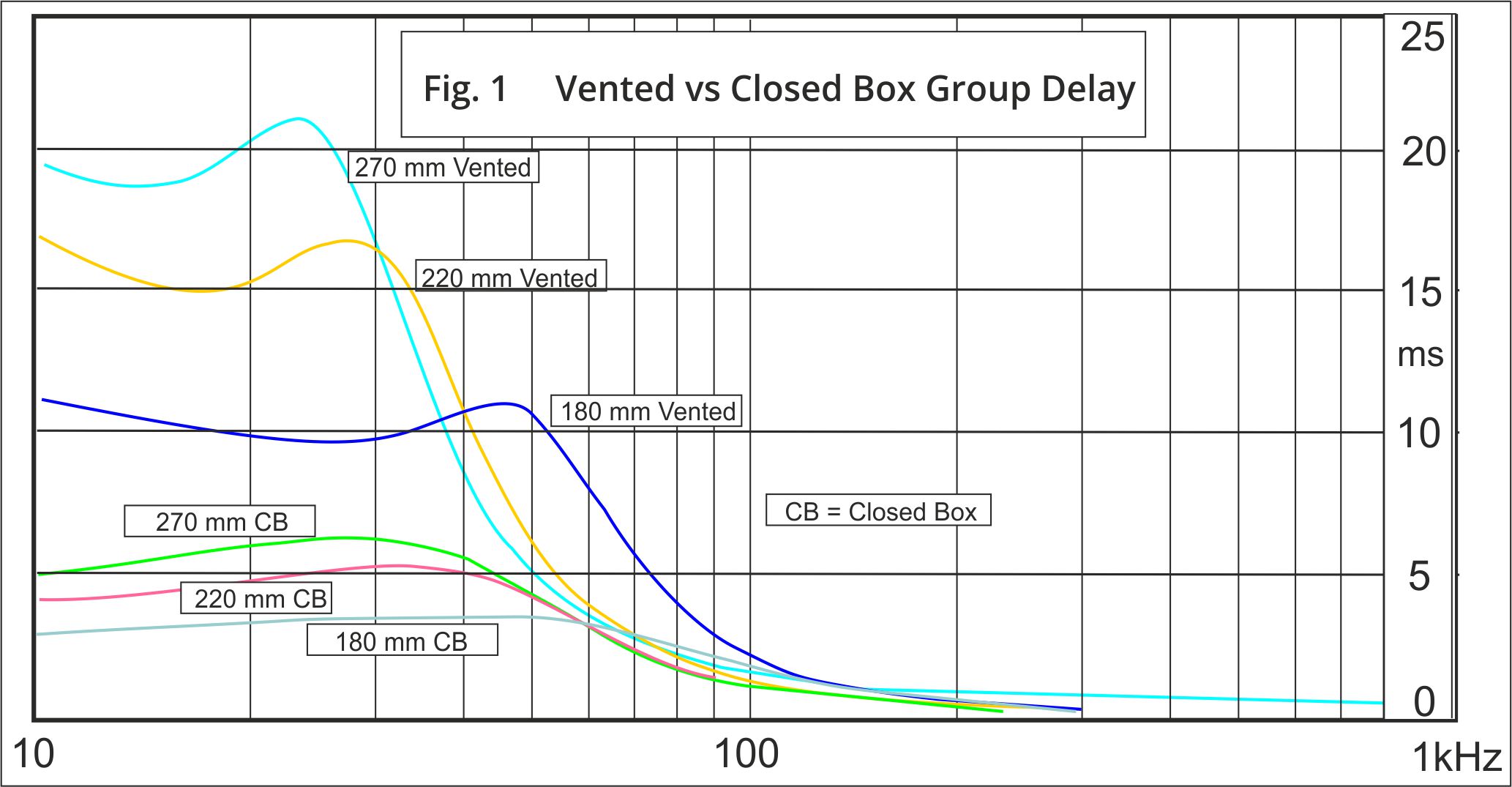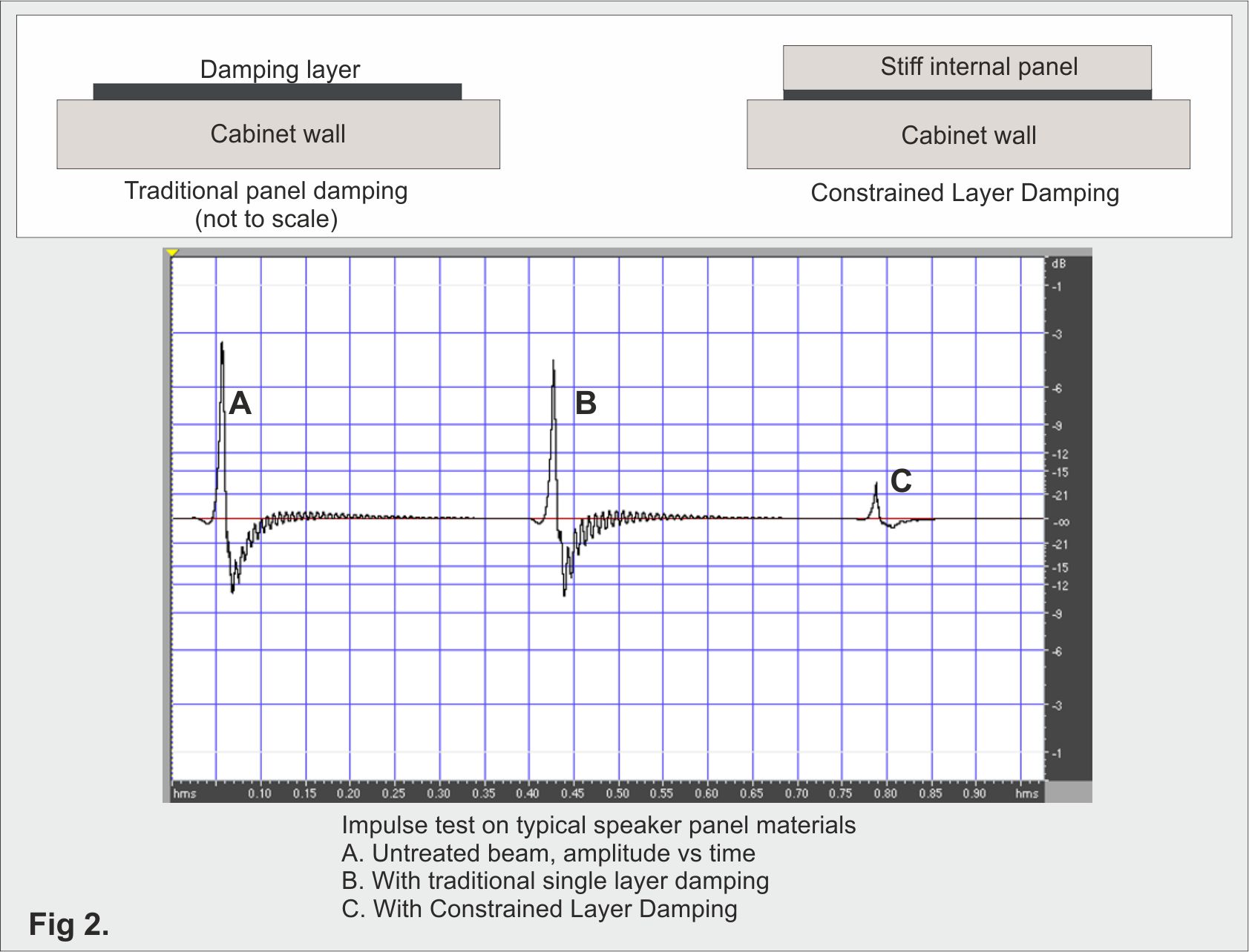Product Range .....
Classic Monitors
Closed box designs for the purist using exceptional drivers and
constructed using Mk-2 constrained layer damping throughout and our usual high quality plywood construction throughout.
Classic Vented Loudspeakers
A range of vented loudspeaker designs giving a more cost effective extended low frequency response. The model SC3WV has Scanspeak Illuminator drivers and uses an exterior crossover for each channel to avoid compromising the cabinet design. A choice is available for a passive crossover or an active analogue crossover with triple Class A/B amplification.
Active Closed Box Loudspeakers
The model 26W-ADS is a state of the art full range loudspeaker with multichannel external analogue active crossover
intended as a benchmark and technology demonstrator. The drivers are Scanspeak Illuminator mid range and tweeter with
a long throw Scanspeak Revelator bass driver.
The bass driver response is first corrected to extend the bandwidth, and then a choice of gentle roll-off's can be selected to minimise
bass group delay.
The unusual cabinet shape is designed to reduce diffraction effects by presenting to the listener a larger cabinet width, with 45 degree edges.
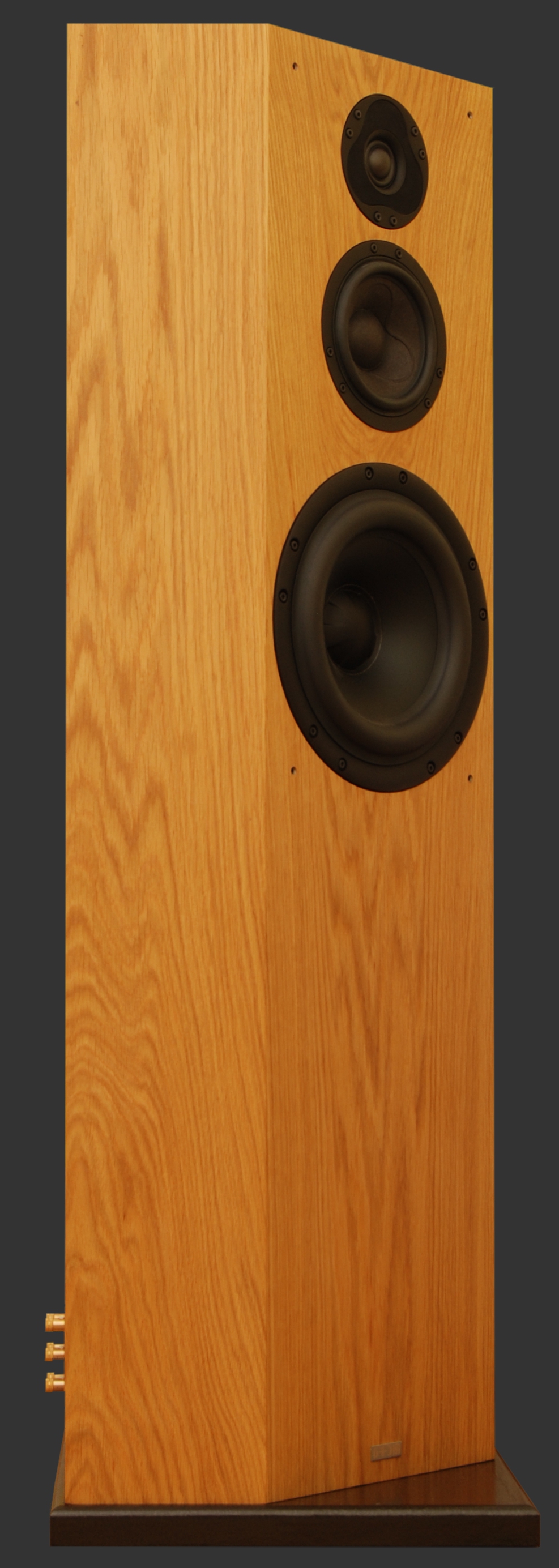

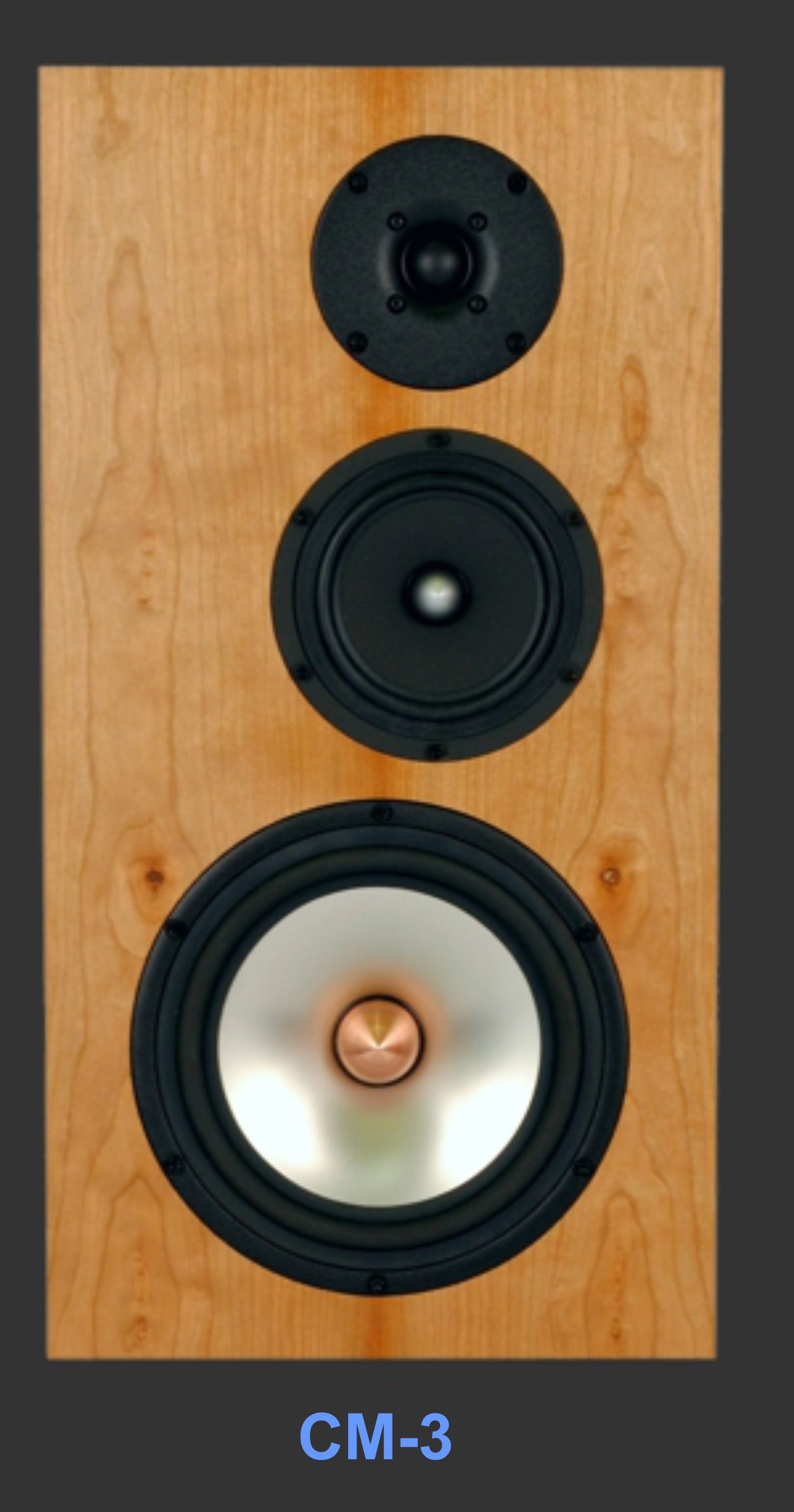
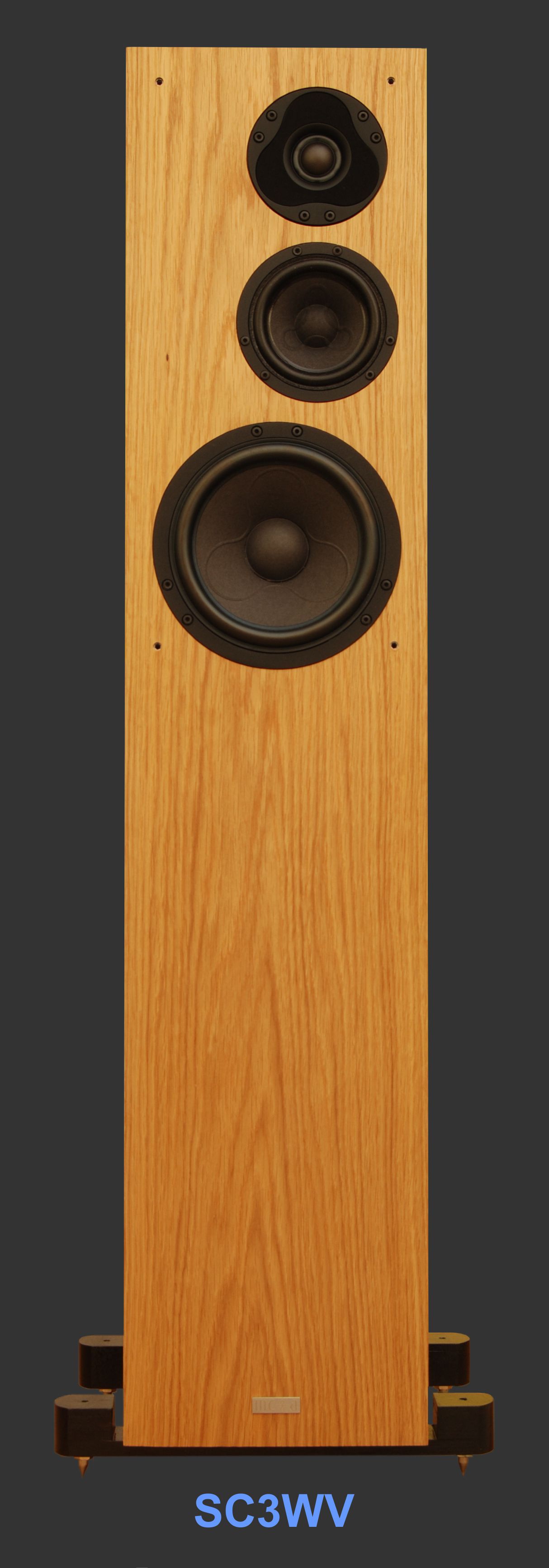
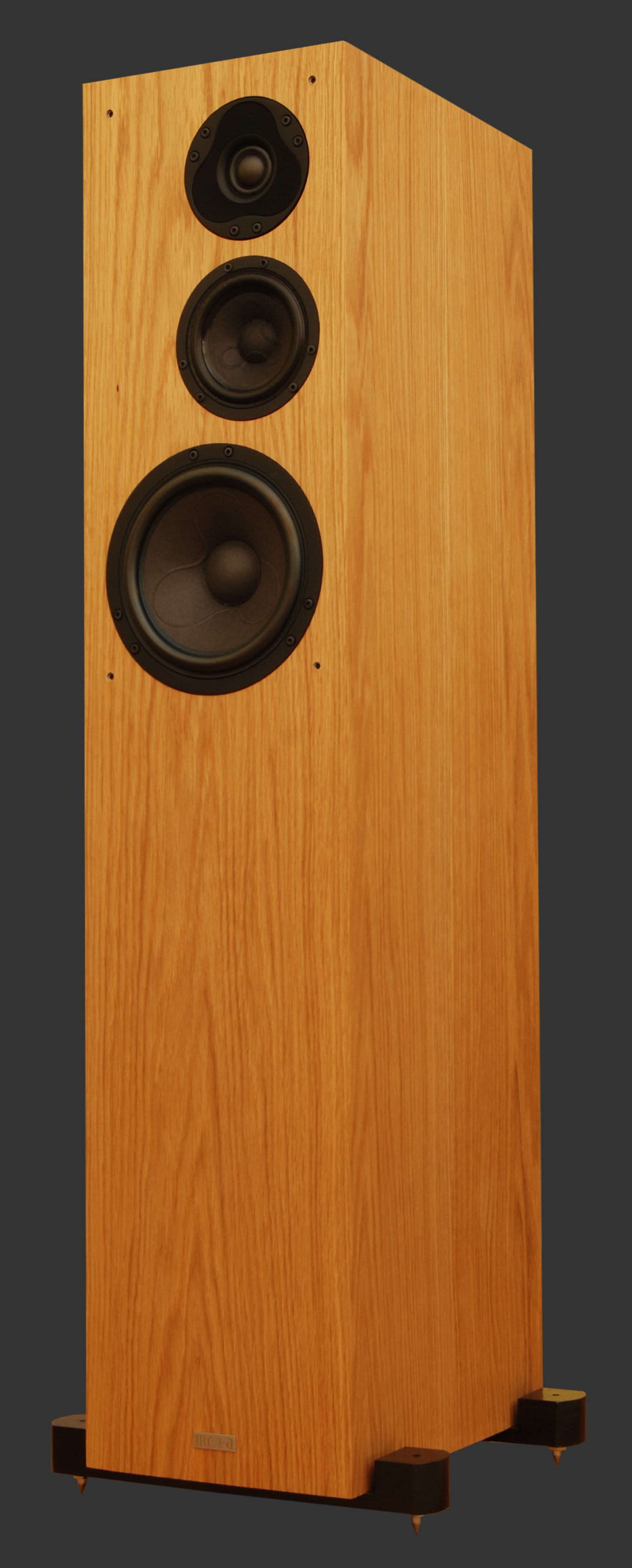
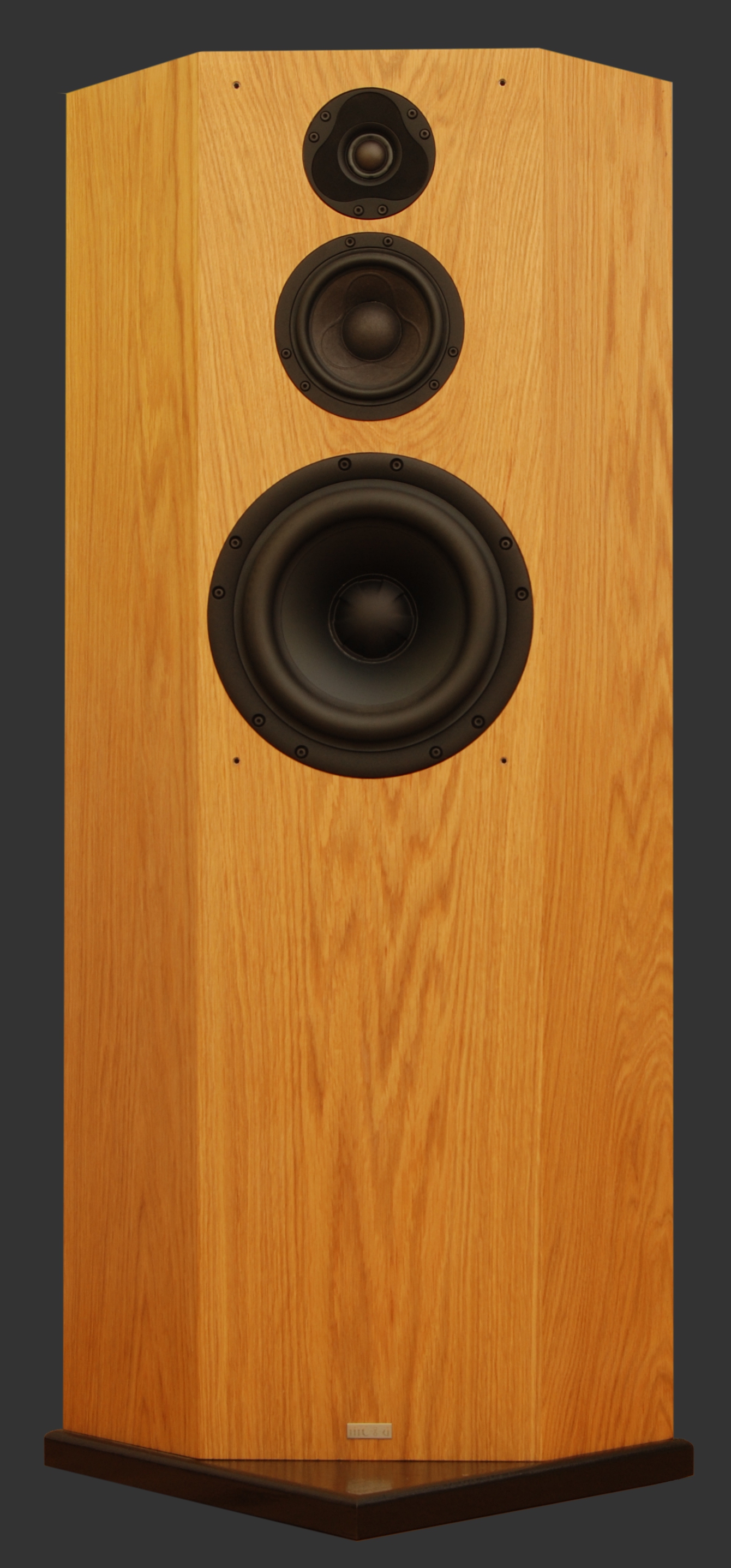
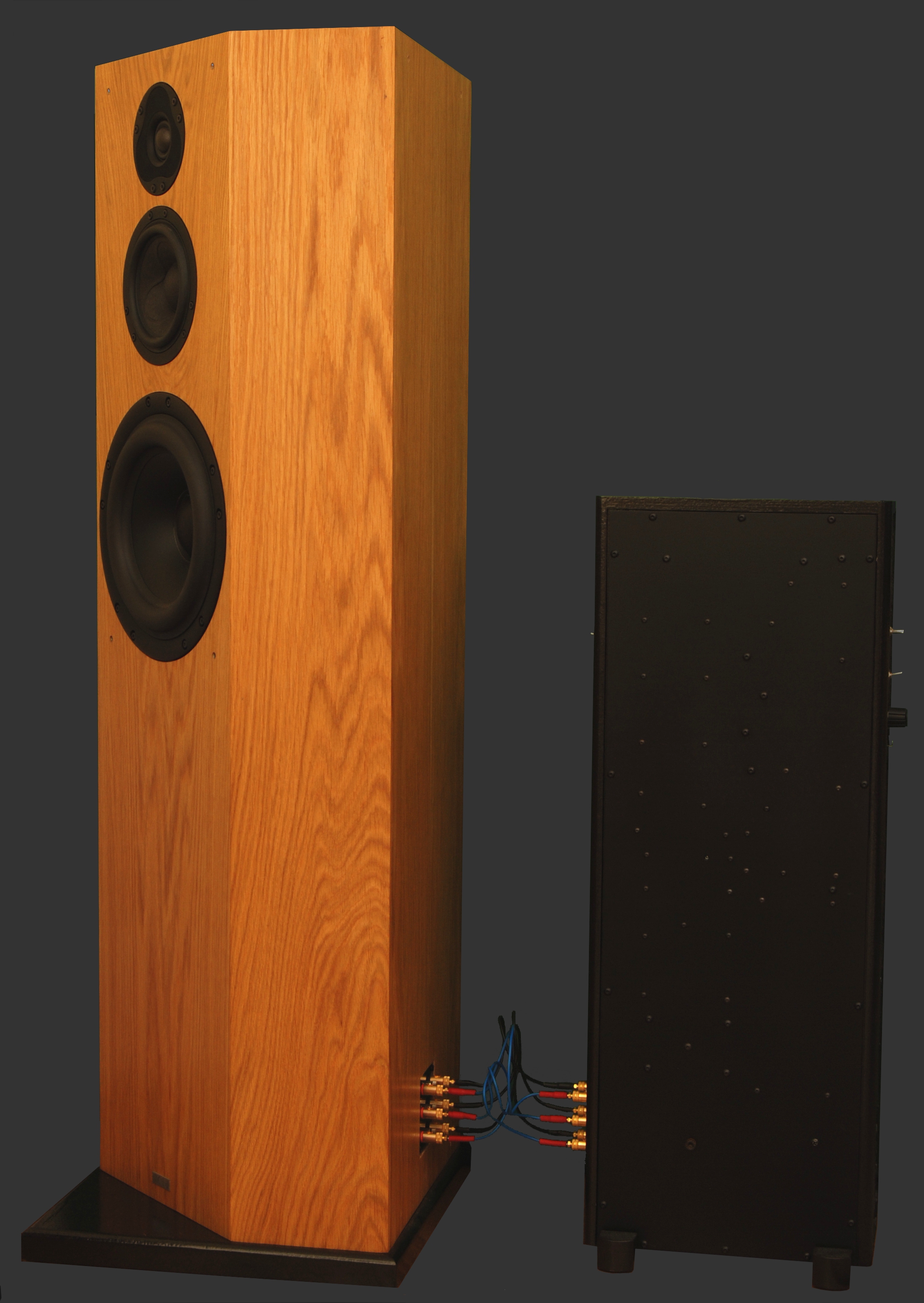
| MODEL | Dimensions HxWxD | LF Response 3 dB, 6 dB | LF Power Bandwidth | Sensitivity 2.82 V | Nominal Imp. | Driver Dia. Bass/mid/tw | Crossover type |
|---|---|---|---|---|---|---|---|
| CM-2 closed box | 390 x 245 x 300 mm | -3dB 80,-6dB 62 Hz | 65 Hz 105 dBA | 84dBA >150 Hz | 7 ohms | 220/----/25 mm | passive |
| CM-3 closed box | 600 x 300 x 350 mm | -3dB 55, -6dB 39 Hz | 55 Hz 105 dBA | 82 dBA >150 Hz | 7 ohms | 220/150/25 mm | passive |
| SC3WV Vented Passive | 1075 x 225 x 335 mm | -3dB 36,-6dB 30 Hz | 34 Hz 105 dBA | 80 dBA >150 Hz | 6.5 ohms | 180/120/25 mm | passive |
| SC3WV Vented Active | 1075 x 225 x 335 mm | -3dB 36,-6dB 30 Hz | 34Hz 105 dBA | 0.35-1.4 V Balanced | 6.5 ohms | 180/120/25 mm | passive |
| 26W/ADS Closed Box Active | 1140 x 370 x 340 mm | -3dB 28,-6dB 20 Hz | 47 Hz 105 dBA | 0.35-1.4 V Balanced | 4 ohms | 260/150/25 | active |
Loudspeakers Comparisons
General Cabinet Parameters
All cabinets are constructed from best quality Latvian birch ply.
Unless otherwise stated, all cabinets are of the closed
box type with low Q factors between 0.5 and 0.6 where
size permits.
The controlled resonance of vented enclosures gives
rise to excessive group delay at low frequencies which
should be avoided.
Fig 1. shows a comparison of typical group delays for
MC loudspeakers with 180, 220 and 270 mm drivers
having 3dB frequency points at 80, 50 and 40 Hz
respectively.
Panel damping is used on all products with a
considered compromise between panel stiffness and
damping effectiveness. A comparison between typical
simple damped panel cabinets and CLD is shown in
Fig2. The materials used have been upgraded to the
current Mk-2 specification and do not use bitumen
materials, which have a tendency to flow when under
pressure or pvc sheet, which is much better than
bitumen but not as stable as Mk-2 damping material.
Note the panel vibration without CLD lasts for up to 300 ms.
All panel areas are damped unless internal crossovers are used and
the current products have an improved heavy stiffening panels.
All bracing panels use fully triangulated designs typically spaced every 180 mm of cabinet height.
All panel areas are damped unless internal crossovers are used and the current products have an improved heavy
stiffening panels. All bracing panels use fully triangulated designs typically spaced every 180 mm of cabinet height.
All drivers are manufactured by Scanspeak and have
shorted turn technology which is important to reduce
distortion across the full mid range.
Critical drivers use underhung voice coils giving
exceptional low level intermodulation distortion.
Damped and coated paper cones are used except
where a driver is used for woofer applications in which
case aluminium may be specified. Neodymium
magnetic materials are used when possible.
All tweeters are soft fabric roll surround types with a
bandwidth extended to 40 kHz.
2nd order Linkwitz-Riley crossovers are used for
passive crossovers.
4th order Linkwitz-Riley crossovers are used for active
design.
Air cored inductors are used above 200 Hz and
substantial polypropylene capacitors are specified.
Above 2.7 mH, high powered, low distortion (less than 0.02%)
bar inductors are used in high end designs.
MC uses real veneers on all products with a standard
0.6 mm thickness. A mixture of traditional materials
and glues are used throughout with a view to using
sustainable sources wherever possible.
Final finishing is usually with British manufactured
danish oil followed by wax polishes.
Standard veneers are typically as follows:
Floor standers: American White Oak
Smaller cabinets: Cherry or the above
We use a gold plated screw terminal produced in the
UK by Michell.
We recommend the use of soldered 4 mm multiple
contact "lantern" terminals produced in Switzerland
by Staubli.
Instead of traditional grills, we provide transparent polycarbonate panels to protect drivers when
the loudspeakers are not in use.
The amplifiers are mono with a separate amplifiers
for each driver. The only passive crossover
components in the system are zobel networks that
correct the driver inductances. The modular
construction is split into the following components:-
1. Standby supply circuitry which controls soft start
and global fault shutdown mechanisms.
2. Main power supply.
3. Input equalisers, audio controls and crossover
circuitry
4. Class AB amplifier circuit boards which have self
contained protection.
All modules with signal inputs and outputs have
balanced connections. The vertical aluminium
cabinet panels are used as the main heat sinks.
Minimum sensitivity for full power output is 1.4 V
rms balanced signal with switched gains of +3, +6, +9
and +12 dB giving 1.4, 1.0, 0.7, 0.35 V rms sensitivity.
For systems with unbalanced signals, Marshall
Choong will provide an active 2 channel unbalanced
(phono) to XLR adapter.
